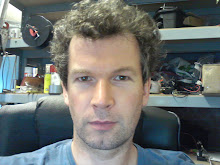

My name is Dan Heeks. I am interested in CNC milling and software development, so I am making an open source CAD/CAM application. Also, I have recently bought a Sieg KX1 CNC milling machine from www.arceurotrade.co.uk. It was less than £2000, when I bought it.
My father is a precision engineer. He has a Bridgeport Series1 CNC milling machine, so he helped me dismantle, clean, oil and re-assemble all the sliding parts of the machine. The software that comes with the machine is called Mach3. It seems to work quite nicely. It is free, if you only want to do 500 lines of NC code, but I paid $159 to unlock it, when I made a NC file with 1000 lines.
I am writing a free CAD/CAM application for Windows using wxWidgets and OpenCASCADE. It can compile with free tools ( Visual Studio 2008 Express ). It is mostly done in C++. I have made the source code freely available. The basic CAD application source code is at http://code.google.com/p/heekscad/ and the milling CNC add-on is at http://code.google.com/p/heekscnc/
But, it's not finished and it's full of bugs, so I wouldn't bother compiling it yourself yet. Feel free to copy any of my code.
Here is a screenshot of HeeksCNC:

To use it; I draw some geometry ( lines, arcs, infinite lines, circles ). Then I enter a program:
spindle(5000.000000)
rate(50.000000, 50.000000)
tool(1, 3.000000, 0.000000)
rapidxy(-6.000000, 4.000000)
rapidz(5.000000)
feedz(-1.500000)
profile(16, "left", -6.000000, 7.000000)
I press the "Run" button and it shows me the tool path.
Then I press "Post Process" button and it makes the NC code.
This is controlled by a script language written in Python.













